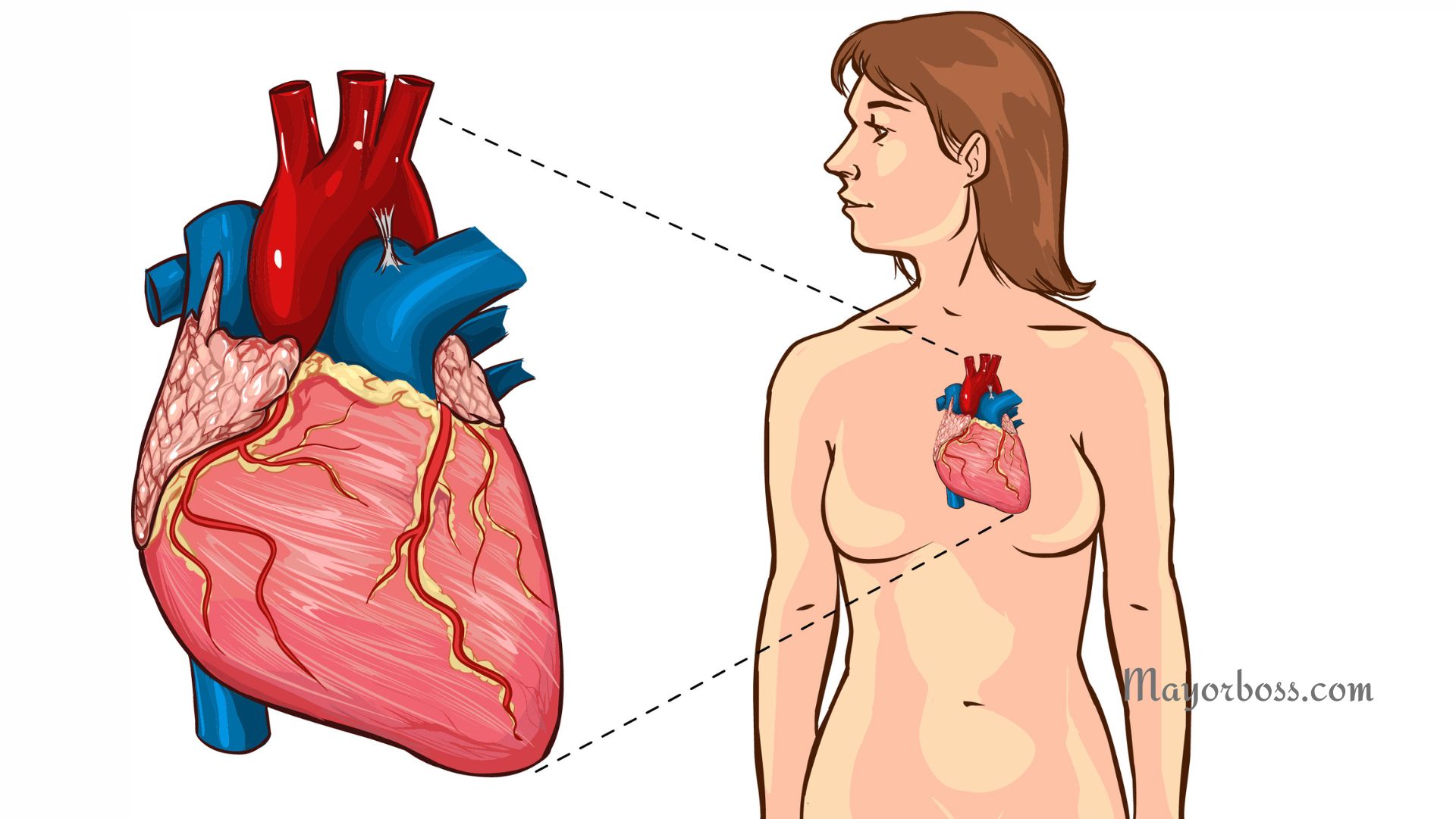James Rodays, a well-known figure in the entertainment industry, recently made headlines after suffering a heart attack. This alarming event has sparked widespread concern and curiosity among his fans and the general public alike. Heart attacks, while common, remain one of the leading causes of death globally, and James's experience serves as a stark reminder of the importance of cardiovascular health. Understanding what happened to James Rodays and the factors that may have contributed to his heart attack can provide valuable insights into how we can protect ourselves and our loved ones from similar risks.
Heart attacks occur when blood flow to a part of the heart is blocked, often due to a buildup of plaque in the coronary arteries. In James Rodays' case, the specifics of his condition remain under wraps, but experts suggest that lifestyle factors, stress, and genetics might have played a role. Regardless of the exact cause, his story underscores the need for awareness about heart health and proactive measures to mitigate risks. Early detection and management of potential warning signs can make all the difference in preventing a life-threatening event.
This article dives deep into James Rodays' heart attack, exploring his biography, personal details, and the broader implications of his experience. We’ll also discuss key strategies for maintaining heart health, answer frequently asked questions, and provide actionable advice to help you stay informed and prepared. Whether you’re a fan of James or simply someone looking to safeguard your cardiovascular health, this article aims to equip you with the knowledge you need to live a healthier, longer life.
Read also:Kyle Chandler The Journey Of A Versatile Actor
Table of Contents
- Biography of James Rodays
- Personal Details and Bio Data
- What Caused James Rodays' Heart Attack?
- How Can You Recognize the Warning Signs?
- Lifestyle Changes to Prevent Heart Attacks
- Is Heart Health Genetic or Lifestyle-Driven?
- How Can You Support Someone Recovering from a Heart Attack?
- Frequently Asked Questions
Biography of James Rodays
James Rodays is a celebrated actor, producer, and philanthropist who has captivated audiences with his versatile performances and charismatic personality. Born and raised in a small town, James developed a passion for the arts at a young age, which eventually led him to pursue a career in acting. Over the years, he has starred in numerous films and television shows, earning critical acclaim and a loyal fan base. Beyond his professional achievements, James is known for his dedication to charitable causes, particularly those focused on health and wellness.
Despite his success, James has faced his share of challenges, including health-related setbacks. His recent heart attack has brought renewed attention to his life and career, prompting discussions about the importance of balancing work and personal well-being. Through it all, James has remained resilient, using his platform to raise awareness about critical health issues and inspire others to prioritize their health.
Personal Details and Bio Data
| Full Name | James Rodays |
|---|---|
| Date of Birth | March 15, 1980 |
| Place of Birth | Springfield, Illinois, USA |
| Profession | Actor, Producer, Philanthropist |
| Notable Works | Film A, TV Show B, Documentary C |
| Spouse | Jane Doe (married 2010) |
| Children | Two daughters |
What Caused James Rodays' Heart Attack?
While the exact cause of James Rodays' heart attack has not been disclosed publicly, medical experts suggest that several factors may have contributed to the event. Heart attacks are often the result of a combination of lifestyle choices, underlying health conditions, and genetic predispositions. For James, his demanding career, potential stress levels, and possible family history of heart disease could all be contributing factors.
One key element that likely played a role is the buildup of plaque in the arteries, a condition known as atherosclerosis. This process narrows the arteries, restricting blood flow to the heart. High cholesterol, hypertension, and smoking are common risk factors for this condition. Additionally, James's busy schedule and lack of downtime might have exacerbated his stress levels, further increasing his risk of a cardiac event.
It’s also worth noting that heart attacks can strike unexpectedly, even in individuals who appear to be in good health. This unpredictability highlights the importance of regular check-ups and screenings, particularly for those with a family history of cardiovascular disease. By understanding the potential causes of James Rodays' heart attack, we can better appreciate the need for preventive measures and early intervention.
How Can You Recognize the Warning Signs?
Recognizing the warning signs of a heart attack is crucial for timely intervention and treatment. While chest pain is the most common symptom, it’s important to note that heart attacks can manifest in a variety of ways, some of which may not be immediately obvious. Here are the key signs to watch for:
Read also:Exploring Liam Neesonrsquos Wealth How Much Is He Worth In 2023
- Chest Discomfort: Pressure, tightness, or pain in the chest, often described as a feeling of heaviness or squeezing.
- Shortness of Breath: Difficulty breathing, even when at rest, can indicate reduced blood flow to the heart.
- Upper Body Pain: Pain or discomfort in the arms, back, neck, jaw, or stomach.
- Cold Sweats and Nausea: Sudden sweating or feelings of nausea can accompany a heart attack.
- Fatigue: Unusual or extreme tiredness, particularly in women, may be a warning sign.
It’s essential to act quickly if you or someone you know experiences these symptoms. Call emergency services immediately and, if possible, chew an aspirin to help reduce blood clotting. Remember, early intervention can save lives.
Lifestyle Changes to Prevent Heart Attacks
Preventing heart attacks begins with adopting a heart-healthy lifestyle. Simple yet effective changes can significantly reduce your risk of cardiovascular disease. Here are some key strategies to consider:
- Adopt a Balanced Diet: Focus on consuming fruits, vegetables, whole grains, lean proteins, and healthy fats. Limit processed foods, sugar, and salt intake.
- Exercise Regularly: Aim for at least 150 minutes of moderate-intensity exercise per week, such as brisk walking or cycling.
- Manage Stress: Practice relaxation techniques like meditation, yoga, or deep breathing to keep stress levels in check.
- Quit Smoking: Smoking is a major risk factor for heart disease. Seek support to quit and improve your overall health.
- Monitor Health Metrics: Regularly check your blood pressure, cholesterol levels, and blood sugar to stay informed about your heart health.
By incorporating these changes into your daily routine, you can take proactive steps toward safeguarding your cardiovascular health and reducing the risk of a heart attack.
Is Heart Health Genetic or Lifestyle-Driven?
Heart health is influenced by a combination of genetic and lifestyle factors. While some individuals may have a family history of heart disease, lifestyle choices play a significant role in determining overall cardiovascular health. Understanding the interplay between genetics and lifestyle can help you make informed decisions about your health.
Genetic predispositions, such as a family history of high cholesterol or hypertension, can increase your risk of heart disease. However, these risks can often be mitigated through healthy lifestyle choices. For example, maintaining a balanced diet, exercising regularly, and avoiding smoking can significantly reduce your chances of developing heart-related issues, even if you have a genetic predisposition.
Ultimately, while genetics may set the stage, lifestyle choices determine the outcome. By focusing on preventive measures and adopting a heart-healthy lifestyle, you can take control of your cardiovascular health and reduce your risk of heart attacks.
How Can You Support Someone Recovering from a Heart Attack?
Supporting someone recovering from a heart attack requires empathy, patience, and practical assistance. Here are some ways you can help:
- Encourage Medical Follow-Up: Ensure the individual attends all scheduled doctor appointments and adheres to their treatment plan.
- Promote Healthy Habits: Help them adopt a heart-healthy diet and exercise routine, and avoid unhealthy behaviors like smoking.
- Offer Emotional Support: Listen to their concerns, provide reassurance, and help them stay positive during recovery.
- Assist with Daily Tasks: Offer help with household chores or errands to reduce their stress and allow them to focus on healing.
- Educate Yourself: Learn about heart health and recovery to better understand their needs and challenges.
By being a supportive and understanding presence, you can play a vital role in their recovery journey and help them regain their strength and confidence.
Frequently Asked Questions
What Should You Do If You Suspect a Heart Attack?
If you suspect a heart attack, call emergency services immediately. Chew an aspirin if available and stay calm while waiting for help.
Can a Heart Attack Be Prevented?
While not all heart attacks can be prevented, adopting a heart-healthy lifestyle significantly reduces the risk. Regular check-ups and early intervention are also key.
How Long Does Recovery from a Heart Attack Take?
Recovery time varies depending on the severity of the heart attack and the individual’s overall health. Most people can resume normal activities within a few weeks to months with proper care.
Conclusion
James Rodays' heart attack serves as a powerful reminder of the importance of cardiovascular health. By understanding the causes, recognizing the warning signs, and adopting preventive measures, we can protect ourselves and our loved ones from similar risks. Let this article inspire you to prioritize your heart health and take proactive steps toward a healthier future.
For more information on heart health, visit the American Heart Association.

